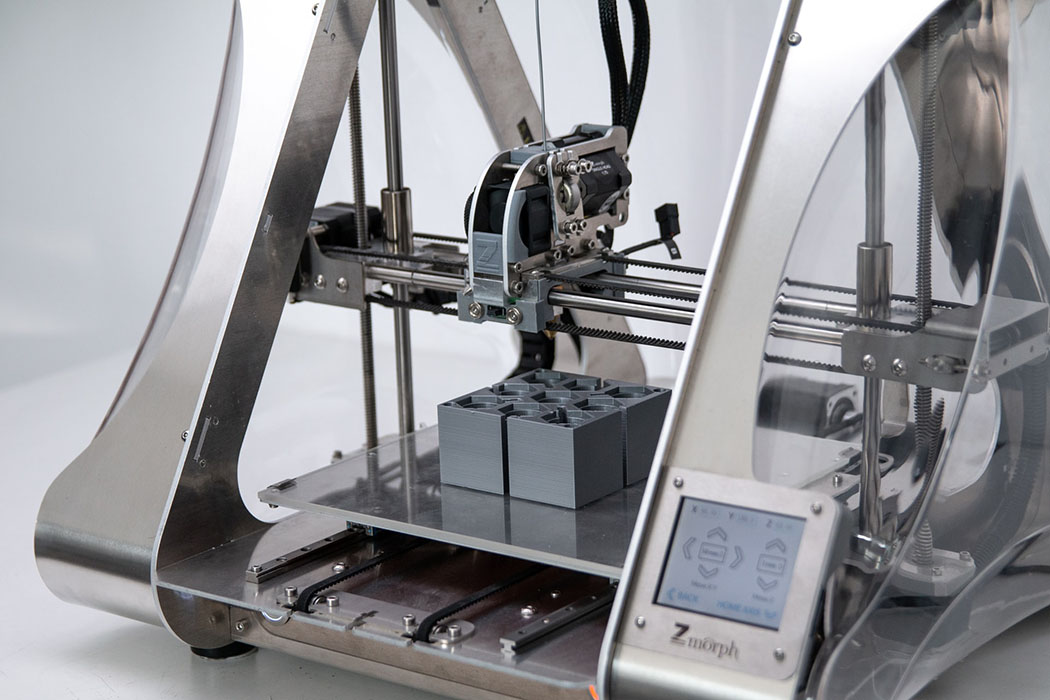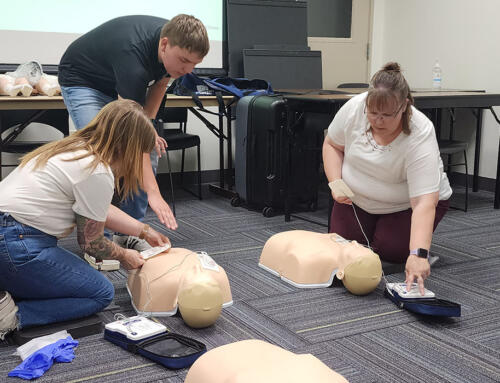3D printing, sometimes known as additive manufacturing, has experienced widespread growth across numerous industries in recent years. It is used in a wide variety of settings, including laboratories, factories, hospitals and in K-12 schools. Still, despite its popularity, users may not realize that 3D printers, the materials they use, or their products and waste could present health or safety hazards.
3D, or additive printing creates a solid object from a digital design file. The process is achieved through a printer that lays down successive layers of the printing medium until the solid object is completely formed. There are a variety of printing materials available for use with 3D printers, each with its own inherent hazards. The two most used materials are Polylactic Acid (PLA) and Acrylonitrile Butadiene Styrene (ABS). In general, PLA is much safer to use than ABS.
Potential Hazards of 3D Printing
Some common hazards include:
- Breathing in harmful materials: 3D printing can release particulates and other harmful chemicals into the air.
- Skin contact with harmful materials: Users can get hazardous materials, such as metal powders, solvents, and other chemicals, on their skin.
- Static, fire and explosion: Some materials used can be flammable or combustible. High temperatures from some printers can cause burns.
Safe Work Practices
Here are some ways to reduce exposure to hazards and prevent injuries:
- All printers must be installed per the manufacturer’s recommendations.
- All users must be trained on the safe use of the printer before use.
- Limit equipment access to trained and authorized personnel.
- Make sure the printer is enclosed and has an interlock system that prevents the machine from running while moving parts are exposed.
- Ensure the room has an adequate air supply and exhaust to dilute and eliminate printer emissions.
- Maintaining a safe distance from the printer to minimize the inhalation of particulates being created.
- Read the printer manual and operating instructions. Do not operate it if it is not clean and in good working condition. Never try to defeat the safety features.
- Follow all personal protective equipment (PPE) recommendations found in the Safety Data Sheet (SDS) for the specific printer media used.
- Users must wash their hands thoroughly after working with 3D printers.
- Inspect the 3D printer for any damaged wiring and safeguards before each use.
- Turn off, unplug, and cool down the unit prior to cleaning or repairing.
- Use manufacturer recommended materials, less hazardous or “green” resins, plastics, or other materials to make your product.
- Promptly clean up and properly dispose of dust, scraps, and waste.





 ESD 112 equalizes educational opportunities for learning communities through innovative partnerships, responsive leadership, and exceptional programs.
ESD 112 equalizes educational opportunities for learning communities through innovative partnerships, responsive leadership, and exceptional programs.